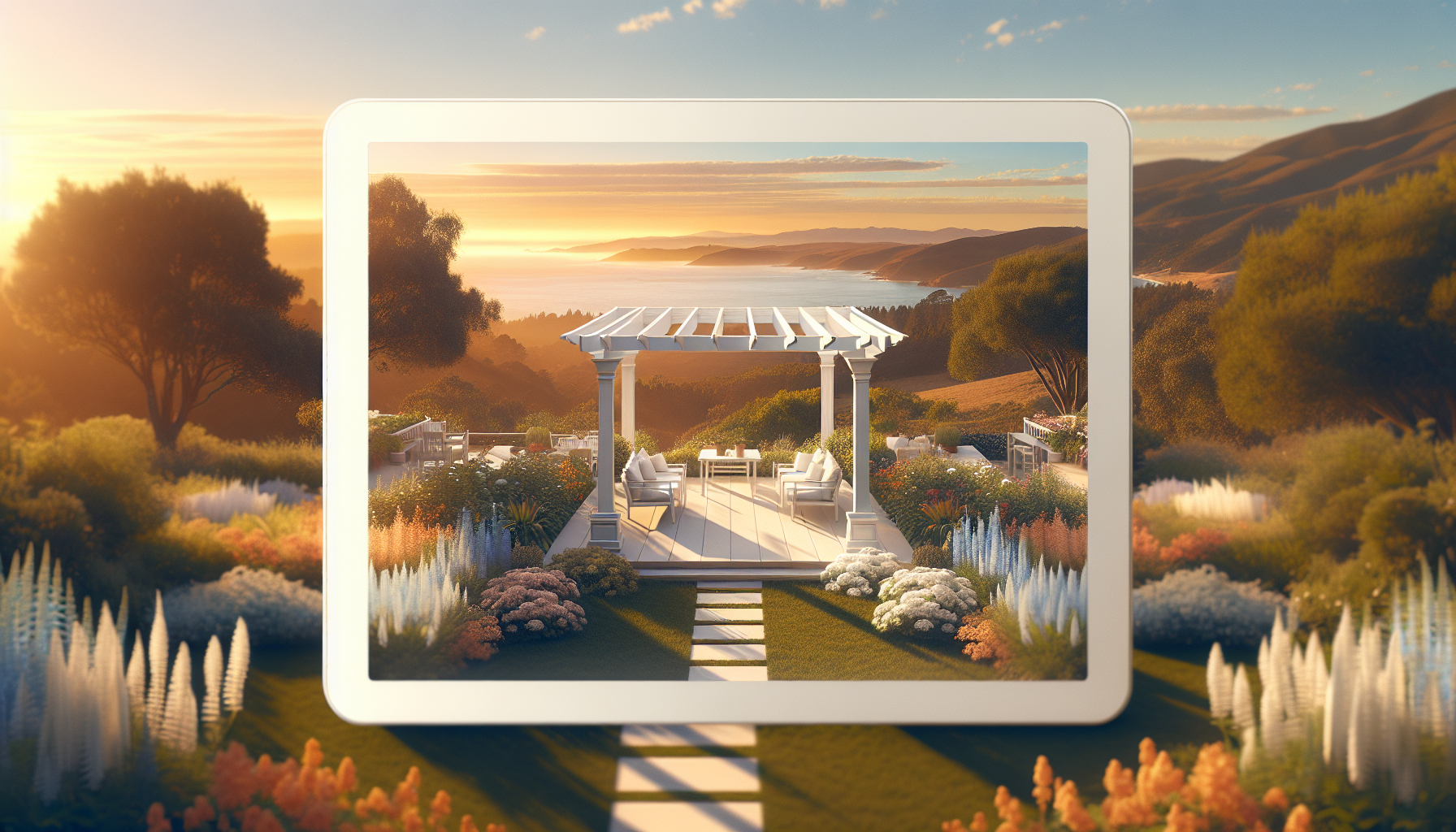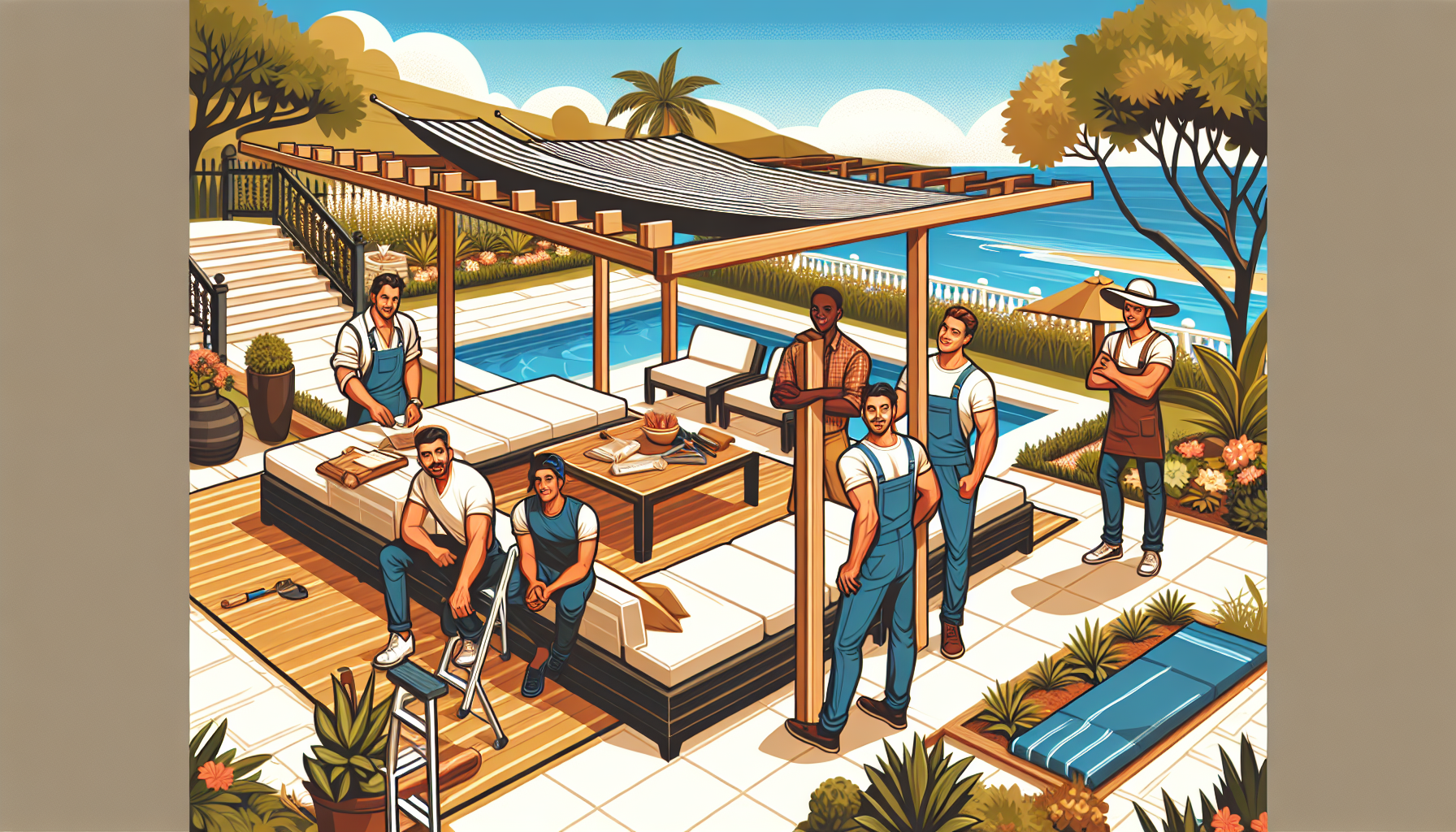The Many Benefits of Installing a Pergola for Shade in Your Outdoor Space
Few structures add as much functional beauty as a pergola when we consider enhancing our outdoor spaces. Not only does it provide a well-defined space for outdoor living, but it also offers welcome shade, making your backyard more comfortable and usable even on the sunniest of days. A pergola becomes a centerpiece for building an outdoor haven tailored to your personal taste.
Enhanced Comfort is undoubtedly one of the primary advantages of installing a pergola. With the right placement, a pergola offers protection from the harshness of direct sunlight while still allowing light to filter through its slatted roof. This creates a unique, spotted shade effect that is soothing and cool. Moreover, setting up a pergola can reduce UV exposure, protecting your family and your outdoor furniture from the damaging effects of the sun.
Another significant benefit is the Extended Living Space it provides. By defining a particular area for outdoor activities, whether barbecuing, dining or simply lounging, a pergola extends your living quarters beyond the confines of your home’s interior. It furnishes an inviting ambiance for entertaining guests or enjoying peaceful solitude. Plus, with the addition of curtains or drapes, a pergola can offer privacy and a sense of seclusion, enhancing the feeling of an outdoor room.
In terms of Design Versatility, a pergola offers abundant options. They can be constructed in various materials, including wood, aluminum, and vinyl, and can be tailored to complement the architectural style of your home. Varying your pergola’s size, shape, and color can further personalize your space, ensuring it perfectly suits your aesthetic preferences and functional needs. Plants can be incorporated into its design, where climbing vines or hanging flowers add a touch of greenery, creating a natural, organic canopy. This integration with nature effortlessly enhances your garden or backyard’s overall beauty.
Choosing the Right Material for Your Pergola for Shade
When selecting the appropriate material for your pergola to provide the ideal shade, multiple factors must be considered to ensure your outdoor structure blends functionality with aesthetics. The right choice of material dictates the durability and longevity of your pergola and impacts the amount of shade and comfort it will offer. Each option has distinct properties and maintenance requirements, from classic wood to modern metals and innovative synthetics.
Wood: A Timeless Classic
Wooden pergolas are popular for those seeking a natural look that seamlessly integrates with their garden or backyard setting. Cedar, redwood, and pressure-treated pine are most commonly used due to their resistance to decay, insects, and weather conditions. Though wood requires periodic maintenance, such as staining or sealing, to retain its appearance and structural integrity, it offers excellent versatility in design. It can create a dappled shade that adds to the comfort of your outdoor space.
Metals: Durability and Sleek Design
Metal pergolas, made from aluminum and steel, bring a sleek, modern aesthetic and can provide a more uniform shade than wood. Aluminum, for instance, is lightweight, rust-resistant, and often comes with powder-coated finishes offering a variety of colors. On the other hand, steel is heavier and incredibly sturdy, ensuring your pergola stands firm against harsh weather. Both metals are low maintenance, but it’s important to ensure they are properly coated to prevent rust and corrosion over time.
Vinyl and Fiberglass: Low Maintenance Options
If minimal upkeep is your top priority, vinyl and fiberglass materials may be your best bet. Vinyl pergolas are rot-free, do not require painting, and are easy to clean, making them ideal for a fuss-free backyard addition. Fiberglass, too, presents an extremely durable option, often capable of spanning longer distances than wood or vinyl without the need for additional support. These materials can reflect more light, offering a cooler shaded area beneath the pergola. While the upfront cost may be higher, the long-term savings in maintenance can make them a worthwhile investment.
Innovative Pergola Designs to Maximize Shade
Shade is a key element in creating a comfortable outdoor living space, especially in areas where the sun bears down for much of the year. Innovative pergola designs have become increasingly popular as homeowners look for ways to enhance their outdoor environment while keeping cool. These structures provide shelter from the scorching sun and add aesthetic appeal to your garden or patio.
Pergolas with Adjustable Louvers are at the forefront of shading innovation. These dynamic structures feature slats that can be tilted to control the amount of sunlight filtering through. By adjusting the louvers, homeowners can enjoy the perfect balance between shade and sunlight at different times. This ensures that the patio or garden area remains usable and comfortable, regardless of the sun’s position.
Another advancement in pergola design is the integration of Retractable Canopies. These canopies can be drawn back or extended, providing flexible shade options for various weather conditions. Whether it’s a bright, sunny afternoon that calls for a shaded retreat or a cloudy day that could use a little more light, retractable canopies provide a simple solution to adapt your outdoor space to your comfort needs quickly.
Plant-incorporated pergolas offer a natural and eco-friendly approach to maximizing shade. By incorporating climbing plants or vines, pergolas create a lush, verdant haven that not only blocks out harsh sunlight but also enhances the air quality and ambiance of the outdoor area. As the plants grow, they weave through the pergola’s structure, providing increased coverage and a unique aesthetic that changes with the seasons.
How to Integrate Pergolas for Shade with Your Landscaping
Integrating pergolas into your landscaping increases the aesthetic appeal of your outdoor space and provides a respite from the relentless sun. When considering the design aspects, think about the location of your pergola. It should be situated in a spot that benefits from natural shade during the hottest parts of the day, perhaps adjacent to tall trees or near the architecture of your home. This will enhance its effectiveness in providing shade and creating a cool outdoor area.
Furthermore, climbing plants on pergolas can offer additional shade and a lush, verdant aspect to your garden. Consider planting fast-growing vines like wisteria, ivy, or grapevines, which can quickly cover the structure and provide a dense canopy. These plants provide extra shade and add a sensory layer to your garden with their fragrant flowers or the rustle of leaves in a gentle breeze.
Choosing the Right Materials for Your Pergola
The materials you select for your pergola can significantly impact how well it integrates with your existing landscaping. Natural materials like wood can blend seamlessly with surrounding trees and shrubs, creating a cohesive and organic look. For a more modern landscape, materials such as metal or composite can offer a sleek contrast and may even be designed to mimic natural wood grain, providing the best of both worlds.
Marrying Functionality and Style
Pergolas are not merely ornamental; they serve a practical purpose by shading outdoor spaces. However, thinking about the style of your pergola is just as important. Whether you opt for a traditional structure with classic lines or a contemporary design with clean angles and minimalistic detailing, the style should reflect the overall theme of your garden. Choosing a design that complements your landscaping makes the pergola a harmonious extension of your outdoor living space rather than a standalone feature.
In integrating pergolas for shade, attention to detail can vastly improve how they function and look within your landscaping. Consider the view under the pergola and ensure it effectively frames your garden. Strategic placement can turn it into a focal point that draws the eye and invites relaxation. Accessories like retractable canopies or string lights can add versatility and ambience to your pergola, making it perfect for daytime shade and evening enjoyment. By thoughtfully integrating these elements, your pergola will provide shade and enhance the beauty and usability of your outdoor living space.
Maintenance Tips to Keep Your Pergola for Shade Looking Great Year-Round
Maintaining your pergola is essential for ensuring its longevity and aesthetic appeal. The first tip to keeping your pergola in prime condition is regular cleaning. Over time, pergolas can accumulate dirt, debris, and even moss or mildew, especially if they’re situated beneath trees or in damp environments. Use a gentle brush or cloth and a mild, non-abrasive cleaner to clean the beams and slats of your pergola. It’s recommended to clean your pergola at least twice a year—once at the beginning of spring to address any build-up from the colder months, and again in the fall to prepare for winter.
Inspect and Repair
Another vital aspect of maintenance is regular inspection and timely repairs. Check for any signs of damage such as cracks, warps, or loose hardware, which could compromise the structure’s integrity and safety. Pay special attention to bolts and screws, tightening them as needed. If your pergola is wooden, look for signs of wood rot or insect infestation. Early detection and repair of these issues can save you from more significant, costly repairs in the future and help maintain the pergola’s structural soundness.
Protective Treatments
Regardless of whether your pergola is made of wood, metal, or vinyl, applying the right protective treatments can greatly extend its life. For wooden pergolas, consider staining or sealing the wood to protect against moisture and UV rays. A high-quality sealant or stain should be applied every few years, depending on the level of exposure and the product’s instructions. Metal pergolas might benefit from a coat of rust-preventive paint, while vinyl structures may require little more than a good wash. However, even vinyl can benefit from specialized cleaners that contain protective compounds to combat fading and weathering.
Focusing on the landscaping around your pergola can also affect its condition. Ensuring proper drainage will prevent water from pooling around the base, which is especially important for wooden pergolas to avoid rot. Additionally, trim back any overhanging branches or climbing plants that may deposit excess leaves or moisture onto the structure. While plants can enhance the look of your pergola, it’s important to manage them so they don’t contribute to unnecessary wear and tear. By following these maintenance tips, you can enjoy a clean and inviting pergola that remains a beautiful focal point in your outdoor space year-round.




